This location is quite far from Bac Ninh city center so it will take visitors about 35-40 minutes to get there if coming from the center of the province.
On the way to Phu Lang pottery village, we had to stop a few times to check if we were going the right way because the roads here were all concreted, with few signs of an ancient craft village.
Yet, as soon as you reach the village gate, you will see its unique features.
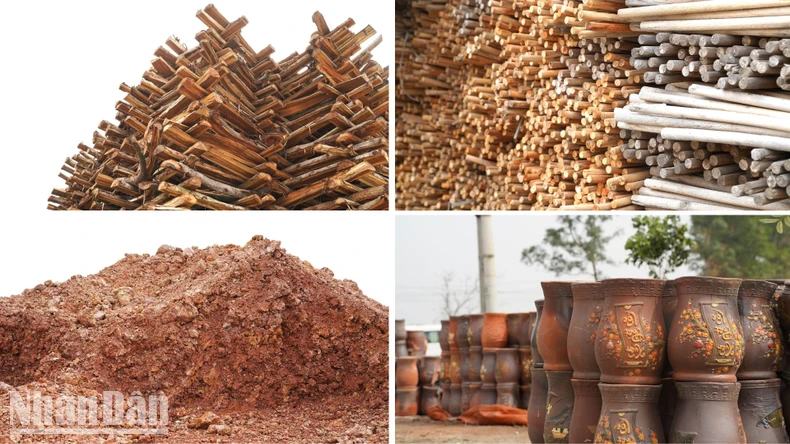 |
On both sides of the road were many jars, pots, and ceramic vases of all sizes lying next to piles of firewood woven together high, ready to be fired in the kiln. All of this was like a welcome to the pottery village without having to bother introducing it with signs or billboards.
The air was filled with the musty smell of clay, mixed with the smell of kitchen smoke, evoking memories of old Northern villages.
Phu Lang pottery village has a quiet look like its age. Local people say that the clay used to make Phu Lang pottery is partly taken from the village, and partly transported from Thong Vat, Cung Khiem ( Bac Giang ) by boat on the Cau River.
That reddish-pink clay is the "backbone" that creates the unique ceramic quality of this craft village.
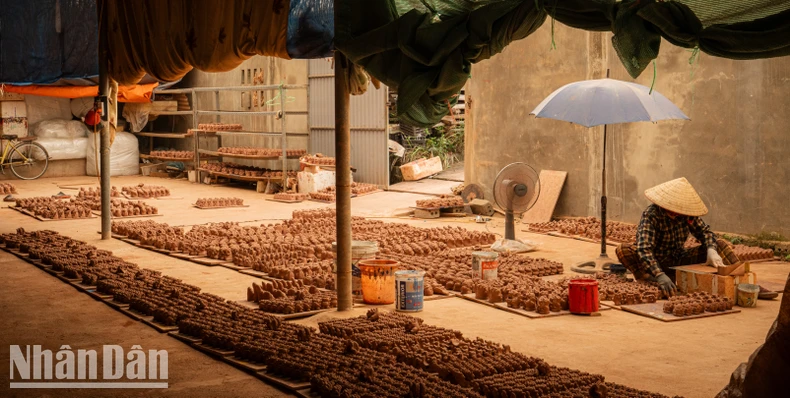 |
Many of our experiences here were accidental, like the pottery making. We had previously scheduled a visit and tried it out with a facility. However, due to the sudden contact, the location was not open in time.
Sitting and waiting was not a good idea as it was getting dark, so we asked permission to leave with the intention of just taking pictures at a few nearby pottery workshops and then returning.
If you happen to visit the village, don’t hesitate to stop by any pottery kiln, ask around and ask permission to join in. No one will be able to refuse curious visitors.
But it was a lucky thing. While walking along the dike, the group saw some small and interesting mascots and stopped to ask. Not only did they get to talk, take photos and film, but the staff were also very happy to let the group experience being a “worker” for a while.
To get to the molding stage, the clay must be dried thoroughly, crushed, and kneaded many times by hand and machine to achieve perfect smoothness.
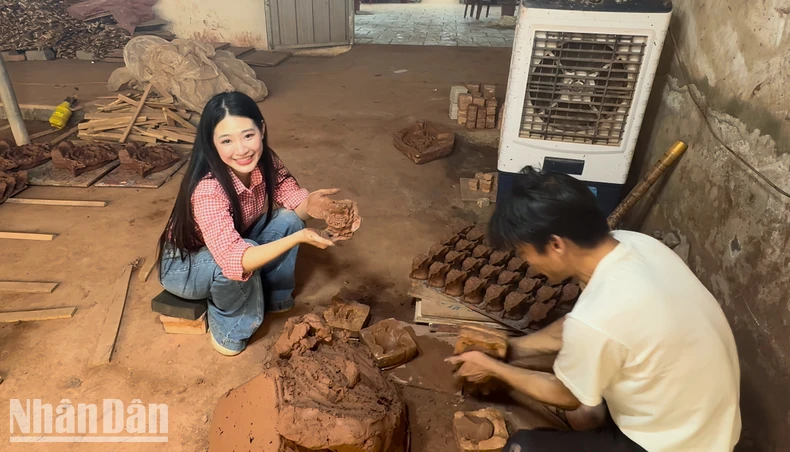 |
When the clay blocks meet the requirements, the next step is shaping. The feeling of touching the soft, smooth clay blocks, kneading and shaping them is interesting but not easy. Not only does it take a lot of effort, but you also have to measure how precisely the clay is thrown into the mold. If you are a little lacking in strength, the clay will not stick to the mold, the shape will not be clear, but if you put in too much strength, it will be easy to throw it off-center.
Mr. Thang, an artisan at the workshop, smiled and said: "Making pottery is very easy, just do it like me. If you can make about 1000-2000 of these models a day, you will be good at it."
Continuously stroking, kneading, pounding, pressing, in no time a tray of statues was completed. Meanwhile our experience character was struggling to turn the piece of land and was then given... 3 points after many efforts.
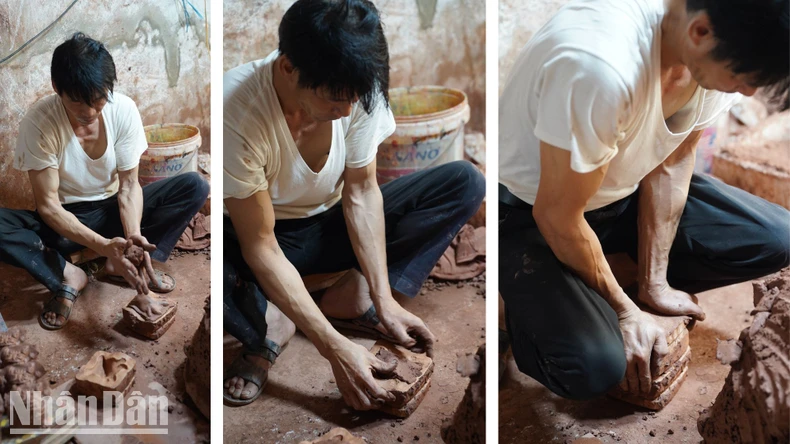 |
Once the shape is complete, the product is dried. This process takes a long time, depending on the solidity, hollowness, size, or smallness of each product. Sometimes some shapes and statues take months to dry.
Next comes the glazing stage, which is the stage of blowing fire and also breathing life into the inanimate clay figures to give them new life. Eel skin glaze, the famous glaze of Phu Lang, has a golden brown or dark brown color, created from wood ash and natural oxides.
To start, people push wood into the front of the stove. This wood is acacia wood, dried thoroughly. At the end of the stove is acacia core, turned into round bars, stuffed in through holes on both sides. Continuously, three to four people work together to put wood in, thanks to that, the fire is bright red.
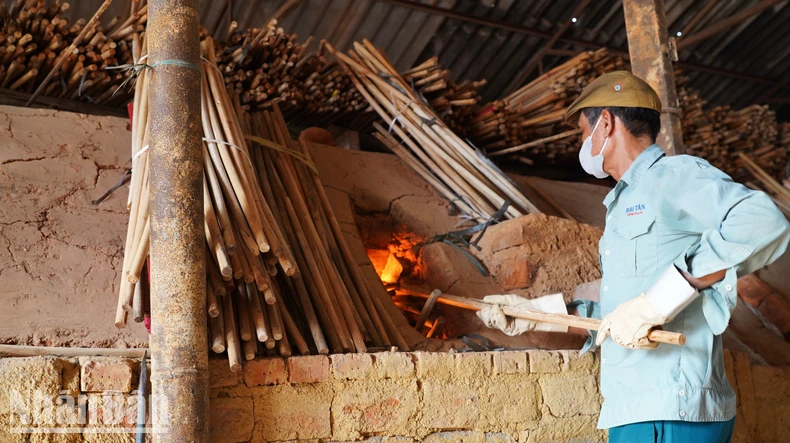 |
This wood is transported from other regions and placed along the village roads and alleys, creating natural "welcome gates" to the craft village that we wondered about when we arrived.
Mr. Nham, a kiln owner, said that the cost of firewood for a batch of pottery can be up to several tens of millions of dong and if not careful, the whole batch of pottery will be ruined. Each batch of pottery must be fired continuously for 4 days and 3 nights, maintaining a temperature of nearly 1,000°C.
When fired, the glaze creates a unique mottled pattern, which villagers jokingly call “fire marks”, a mark that only a traditional wood-fired kiln can create.
So if you happen to visit the village, don’t hesitate to stop by any pottery kiln, ask around and ask permission to join in. No one will be able to refuse curious visitors.
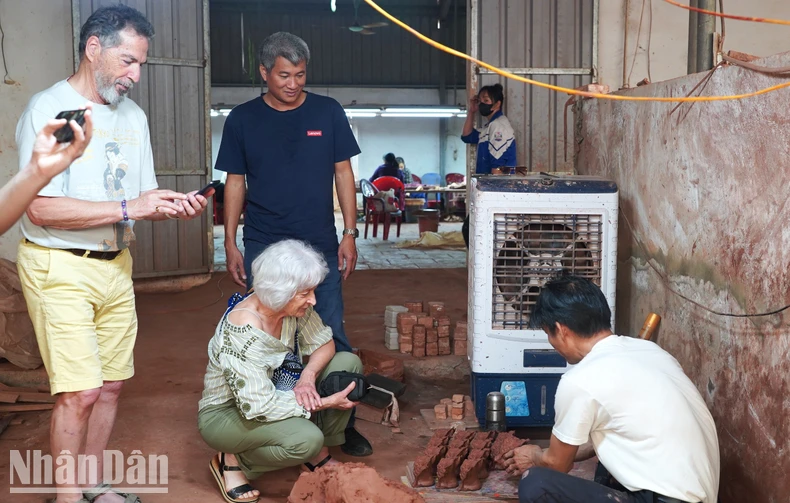 |
Indeed, in just a few hours of our stay, many foreign groups have come by. They complimented the skillfully crafted clay pieces and the diligent workers who breathed life into the clay ten times over.
A small note for those who want to visit the village and experience making pottery, you should spend at least one session to see all the interesting things.
Phu Lang pottery village has a long history, associated with the name of the founder of the craft, Luu Phong Tu - the person who is said to have brought the pottery craft back to the country. According to old books, he was sent to China as an envoy and learned the secret of pottery making. When he returned, he taught the craft to the local people.
The pottery craft was first popular in the area along the Luc Dau River, then gradually spread to Van Kiep ( Hai Duong province) and finally took shape in Phu Lang Trung at the beginning of the Tran Dynasty. Since then, Phu Lang has become one of the famous traditional pottery villages of Vietnam.
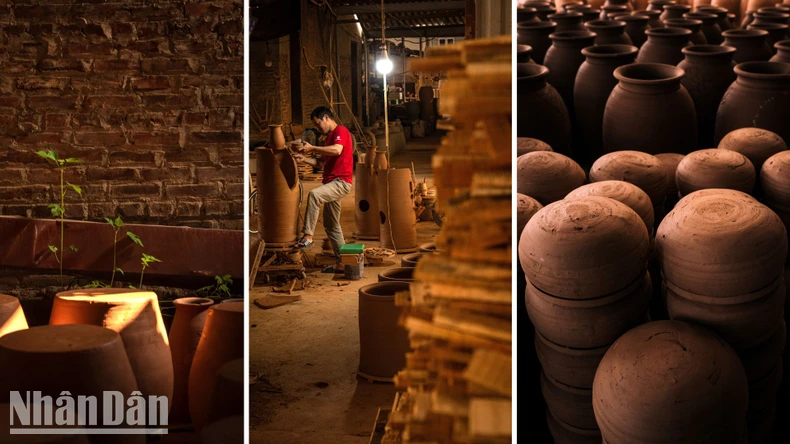 |
Up to now, Phu Lang ceramic village has a history of nearly 700 years and is known as the most famous ceramic village in Kinh Bac region. Products from here have become famous throughout the country for their durability and sophisticated lines.
The fire here is not only the red flame in the kiln, but also the love and passion of the workers who have devoted their whole lives to the profession.
Road to Phu Lang pottery village:
1. Drive along the Hanoi – Bac Giang highway. When you arrive at Bac Ninh city, turn onto Highway 18 towards Chi Linh – Quang Ninh. Continue straight to Pha Lai area, turn onto the road to Phu Lang village.
2. Ride a motorbike along Highway 18 via Dong Tru Bridge or Thanh Tri Bridge to reach Highway 5. Continue along Highway 18 through Bac Ninh, Que Vo, to Pha Lai and then turn onto the road to Phu Lang village.
The distance is about 60km, takes about 1.5 hours to travel.




![[Photo] Closing of the 1st Congress of Party Delegates of Central Party Agencies](https://vphoto.vietnam.vn/thumb/1200x675/vietnam/resource/IMAGE/2025/9/24/b419f67738854f85bad6dbefa40f3040)



![[Photo] Closing of the 1st Congress of Party Delegates of Central Party Agencies](https://vphoto.vietnam.vn/thumb/402x226/vietnam/resource/IMAGE/2025/9/24/b419f67738854f85bad6dbefa40f3040)




![[Photo] Editor-in-Chief of Nhan Dan Newspaper Le Quoc Minh received the working delegation of Pasaxon Newspaper](https://vphoto.vietnam.vn/thumb/402x226/vietnam/resource/IMAGE/2025/9/23/da79369d8d2849318c3fe8e792f4ce16)
![[Photo] Prime Minister Pham Minh Chinh chairs the 14th meeting of the Steering Committee on IUU](https://vphoto.vietnam.vn/thumb/402x226/vietnam/resource/IMAGE/2025/9/23/a5244e94b6dd49b3b52bbb92201c6986)
![[Photo] The 1st Congress of Party Delegates of Central Party Agencies, term 2025-2030, held a preparatory session.](https://vphoto.vietnam.vn/thumb/402x226/vietnam/resource/IMAGE/2025/9/23/e3a8d2fea79943178d836016d81b4981)










![[Photo] Editor-in-Chief of Nhan Dan Newspaper Le Quoc Minh received the working delegation of Pasaxon Newspaper](https://vphoto.vietnam.vn/thumb/1200x675/vietnam/resource/IMAGE/2025/9/23/da79369d8d2849318c3fe8e792f4ce16)




































![[Photo] Solemn opening of the 1st Congress of Party Delegates of Central Party Agencies](https://vphoto.vietnam.vn/thumb/402x226/vietnam/resource/IMAGE/2025/9/24/82a89e250d4d43cbb6fcb312f21c5dd4)
































Comment (0)